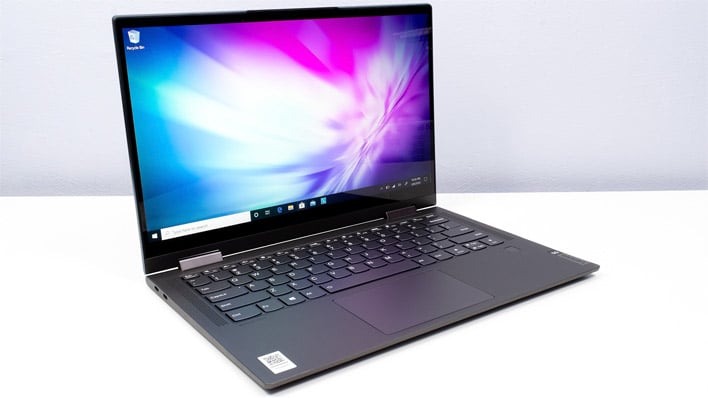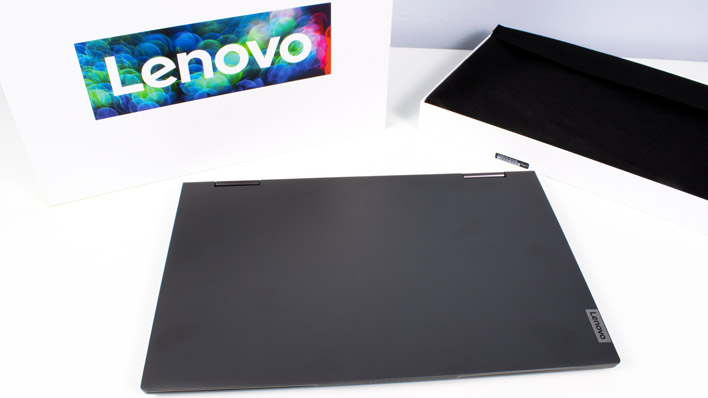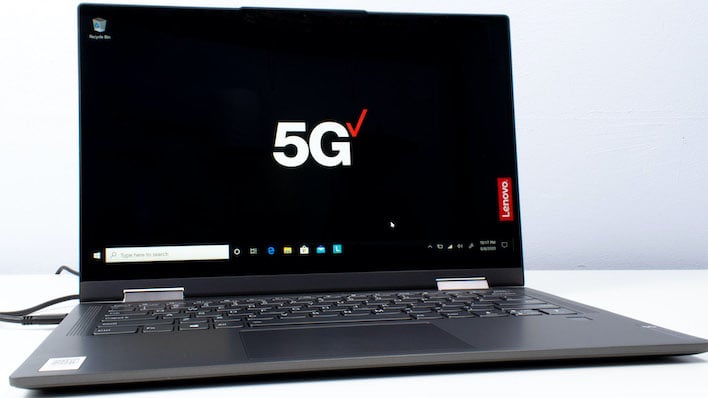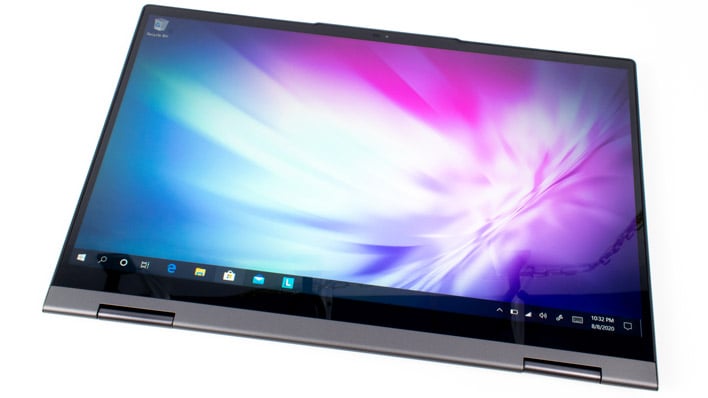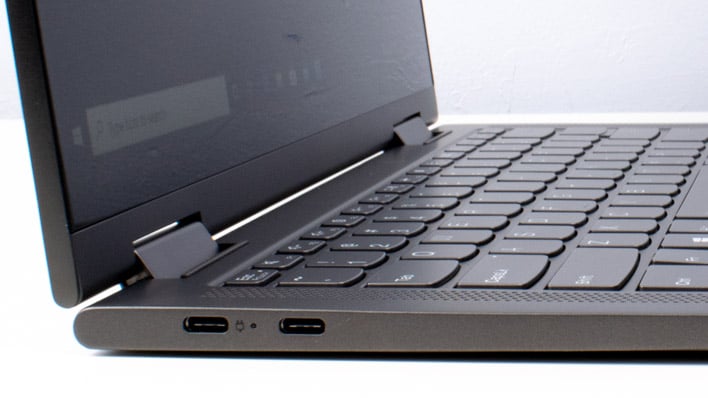Lenovo Flex 5G Review: Incredible Battery Life With Caveats
Lenovo Flex 5G: Crazy Battery Life, 5G Connectivity When You Can Find It
While we are still in the early stages, more and more PC manufacturers have jumped aboard the Windows on Arm train. First we had Microsoft's initial offering, the Surface Pro X. Then Samsung joined the fray with the traditional-looking Galaxy Book S, with battery life that lasted for days. Now Lenovo has crashed the party with the Flex 5G, a machine with Qualcomm's Snapdragon 8cx 5G system on a chip (SoC) stuffed inside a versatile, a do-it-all convertible 2-in-1 design.
Reviewing an Arm-based Windows PC every few months gives us a glimpse into the evolution of the Arm ecosystem. At first, there weren't many production-ready apps—even Microsoft's Edge web browser was in its beta infancy when the Surface Pro X launched last winter. As time progressed, we saw with the Galaxy Book S that Arm-native apps were starting to come into their own. Not only Edge, but VLC and several games on the Windows store were all set for Qualcomm SoCs. We also discovered that since so many productivity tasks rely on a web browser, we could get quite a bit done on a Snapdragon 8cx system.
The most important aspect of these Arm-based systems, however, is their always-on nature with long-lasting batteries and potential for cellular connectivity. The Flex 5G has a leg up on the competition in this regard, since it's the first notebook with 5G cellular connectivity on Verizon's mmWave 5G network. This potent combination allows us to work from anywhere, even if many of us are aren't really going anywhere these days. Even if we're working from home, though, we can still move around freely, without needed a local WiFi connection. Let's stop for a moment and meet Lenovo's Flex 5G...
|
| Processor | Qualcomm Snapdragon 8cx (8 cores ARM64 up to 2.84 GHz) |
| Display | 14.0-inch 1920x1080 LED backlit display with 10-point touch and 100% sRGB gamut |
| Graphics | Qualcomm Adreno 680 integrated graphics |
| Storage | 256 GB UFS 3.0 SSD (soldered) |
| Memory | 8 GB LPDDR4x 1,866 MHz (soldered) |
| Audio | Stereo Speakers with Dolby Atmos |
| Camera | 720p HD Webcam with Windows Hello facial recognition |
| Networking | Qualcomm 802.11ac Wi-Fi Bluetooth 5.0 Qualcomm X55 5G modem |
| Ports: Right | 1x Airplane Mode toggle 1x Four-pole Headset |
| Ports: Left | 2x USB Type-C (USB 3.1 Gen 1 + DisplayPort Alternate Mode) |
| Ports: Rear | 1x 5G SIM tray |
| Keyboard | Chicklet-style tenkeyless keyboard with integrated fingerprint reader |
| Touchpad | Single-piece seamless touchpad with integrated buttons |
| Battery | 39.8 Watt-hour |
| Weight | 2.9 lbs (1.31 kg) |
| Dimensions | 12.71 x 8.54 x 0.58" (320 x 215 x 14.7 millimeters) |
| Warranty | 1 year limited hardware warranty |
| Operating System | Windows 10 Pro |
| Price | $1,499 as tested (available from Lenovo and Verizon) |
As you can see above, the Lenovo Flex 5G is stacked to the gills with all the current hardware from Qualcomm. The Snapdragon 8cx has a total of eight cores in its Kryo 495 CPU that run at speeds upwards of 2.85 GHz and 10 MB of L3 cache. The SoC pulls data from 8 GB of LPDDR4x memory, 7.75 GB of which is available to Windows for general tasks and the remaining reserved for graphical tasks performed by the Adreno 680 GPU. Primary storage is 256 GB of integrated UFS 3.0 flash, identified by Windows as the same Samsung KLUEG8UHDB-C2D1 we find embedded in the Galaxy S20 smartphone family.
The star of this show, however, is Qualcomm's X55 modem, which provides 5G cellular connectivity as well as support for gigabit 4G LTE signals. We'll definitely put the screws to this thing before this review is finished. Having 5G makes the system ready for the future, but 4G connectivity is important for a big chunk of the U.S. since Verizon's 5G network is limited to densely-populated portions of large metropolitan areas. There's also an 802.11ac Wi-Fi and Bluetooth 5.0 module complete with aptX low latency, high quality wireless audio.
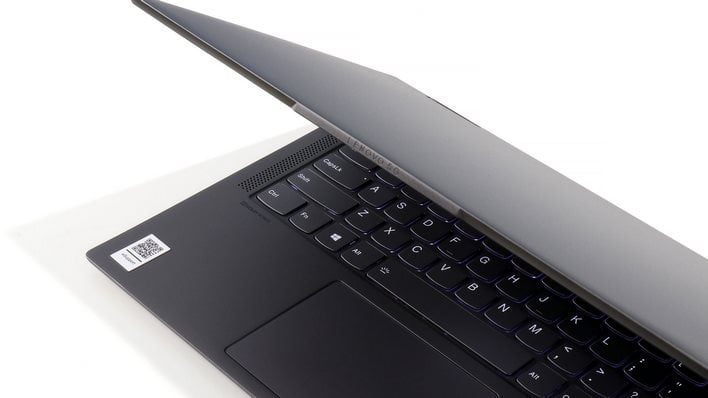
That 5G comes at a price, though. Our review unit is $1,499 from Lenovo directly, or $1,399 if you choose to buy it from Verizon. Other laptops in the Lenovo Flex 5 series go for much less than that. For instance, the AMD Ryzen 5-equipped version with a Renoir APU, 8 GB of memory, and a 256 GB SSD is only $820 on Amazon.
It depends on what the trade-offs on battery life and performance are worth to individual buyers, of course, but there is somewhat of a "5G tax" on this machine that explains the price premium. Based on our prior experience with Snapdragon 8cx laptops and this system's 60 Wh battery, longevity should be tremendous, so there's also that to consider. We'll look at battery life in more depth later on.
Lenoxo Flex 5G Industrial Design
The Flex 5G comes in an Iron Grey finish. This kind of almost-black chassis looks incredibly svelte, and thanks to an aluminum and magnesium alloy, it's also pretty lightweight while still being fairly resistant to scratches, scrapes, and fingerprints. Because it's a 2-in-1 convertible notebook, Lenovo intended for this system to be used while mobile in a variety of conditions, meaning it'll be carried around, folded and unfolded, and handled regularly. We're pretty confident that the Flex 5G can survive that, though the metal materials may not stand up to being dropped on a hardwood or concrete floor without showing some dents and dings.Being a 14" notebook, the Flex 5G is a bit chunkier than your average 13.3" ultrabook. While it's not heavy at all, the system's 2.9-pound mass is around a third heavier than the Samsung Galaxy Book S, which is based on the same Snapdragon 8cx chipset, but with a smaller 13.3" display. The Flex 5's 12.7" x 8.54" x 0.58" footprint is also necessarily bigger than the Samsung machine. None of this is a negative if you need a bit more display real estate, though -- we're just pointing out the specifics.
There's a full 360-degree range of motion in the hinge, which allows the system to fold back into tablet mode. As usual for a 2-in-1, the keyboard stops responding once the hinge is fully opened, but there's no magnet to hold the lid against the base. There's enough friction in the hinge that it was never an issue for us, though. That robust hinge can also handle tent mode, which makes the Flex 5G a nice tabletop media device.
When open in clamshell or tablet mode, the front of the device is dominated by a 14" 1920x1080 multi-touch IPS display. The panel has a maximum brightness of just 400 nits, but indoors it was more than bright enough for any room in the house. The color reproduction is fairly average, maxing out at 100% of the sRGB color space, or 72% of NTSC. The touch display also supports Windows Ink, though the Flex 5G doesn't ship with an active stylus. The Lenovo Pen can be had for a mere $38 direct from Lenovo, however, so artists and note takers can add some very useful functionality for a pretty low price.
Above the display in its traditional resting place is a 720p HD webcam. As far as integrated cameras go, it's about average, which means it's useful for the typical Zoom or Teams meeting, but isn't really livestream-worthy. On the other hand, it does support Windows Hello facial recognition, so logging into the PC without a password is as easy as being yourself. If fingerprint biometrics are more your style, there's a fingerprint reader, too.
For audio, the Flex 5G has a total of four speakers and boasts Dolby Atmos certification. Two speakers flank the keyboard on either side and fire upward in clameshell mode. The other two speakers sit at the bottom lip of the base, and push sound forward when the system is folded around into tablet mode. While they don't put out much bass due to their size, these full-range drivers get plenty loud and don't sound harsh or offensive. They're nice for Netflix streaming, for sure. For audio input, the Flex 5G has a noise-canceling microphone array that does a nice job of making sure we could be heard on our conference calls.
The keyboard on the Flex 5G is excellent. Typing is very easy as the keys are comfortable and responsive, though they have a relatively short throw. We had no problems with dropped keystrokes or flex, however. In contrast to the Galaxy Book S, which we felt was "nice enough" but the body was probably too thin for a true high-quality experience, the added thickness of the Flex 5G gives ample room for a nice keyboard. Below that is a trackpad which has generous proportions and full Windows 10 gesture support. The fingerprint reader sits on the right of the trackpad.
In tablet mode, three of the four sides have pretty thin bezels. The "top" where the camera resides and the left and right edges are all quite thin. Opposite the camera is a pretty hefty chin, which we really appreciated when the system was all folded up. There was plenty of room along the hinge to grab onto the system. We never felt we were in any danger of dropping the Flex 5G when holding it in landscape or portrait mode. And a built-in gyro automatically rotates the display based on how it is held.
The ports on the Lenovo Flex 5G are pretty spartan. A pair of USB 3.1 Type C ports adorn the left side, and either of them can be used with the 45W charger included with the notebook. Around the right side we find the power button, hardware airplane mode toggle switch, and a four-pole analog headset jack that will work with the single-connector headsets that many phones can no longer handle without an adapter. Inside the hinge is a pushpin-style SIM tray. Unlike many phones and the Galaxy Book S, there's no micro SD card reader included.
The Lenovo Flex 5G Software Experience
For the most part, the Flex 5G has a relatively sparse software loadout. It's running Windows 10 Pro, and our review unit had the Windows 10 2004 update already installed. In fact, aside from Lenovo Vantage and Verizon's Connection Manager app, there was no additional software at all on the system. The Windows installer did add Office, Spotify, and Skype, but overall that's a pretty lean software installation, which we really appreciate.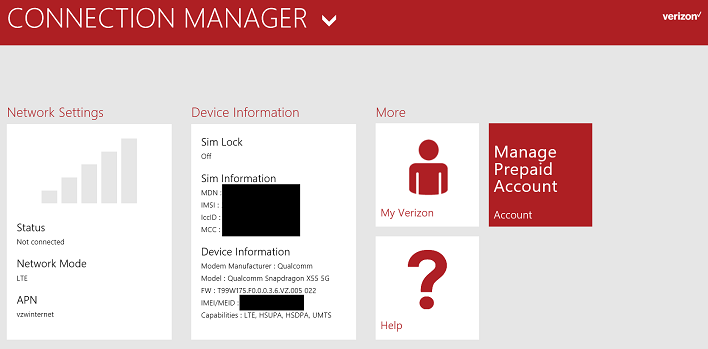
Verizon Connection Manager is a straightforward app that shows information about your cellular plan and connection. From here, you can check the activation status, see the network type you're connected to, and access the My Verizon portion of the Verizon website. Device Information shows the status of the SIM lock, modem manufacturer, and a QR code to see more information. The Settings page has a toggle to enable roaming and automatic connections.
Something buyers will probably appreciate is that the Flex 5G comes with a one-year subscription to Microsoft 365 Personal. That includes 1 TB of cloud storage along with Word, Excel, PowerPoint, and Outlook which can be installed on up to 5 devices. The only catch is that it has to be activated within the first six months of owning the system, which should not be an issue.
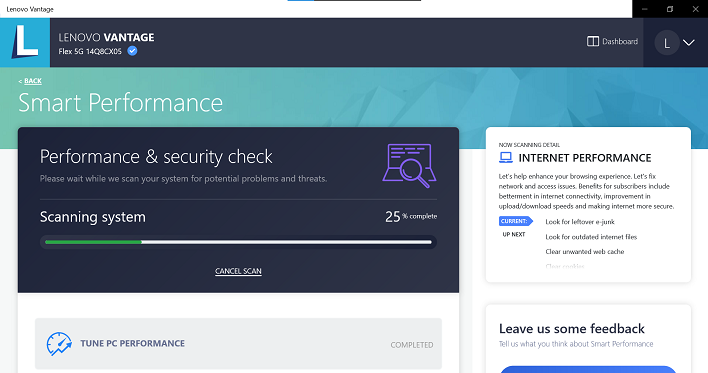
Lenovo Vantage often has a lot of system settings and battery optimization options, but on the Flex 5G. Aside from some links to internet safety tips, the only real functionality is in the Smart Performance check, which looks at system responsiveness and security and alerts users if there are any problems. Smart Performance is an add-on subscription service provided by Lenovo, and unless you've subscribed all you can do is run the manual scan.
Now that we've gotten to know the Flex 5G, let's take Lenovo's and Verizon's first 5G-equipped notebook out for a cellular test drive and see what this X60 modem can do.

